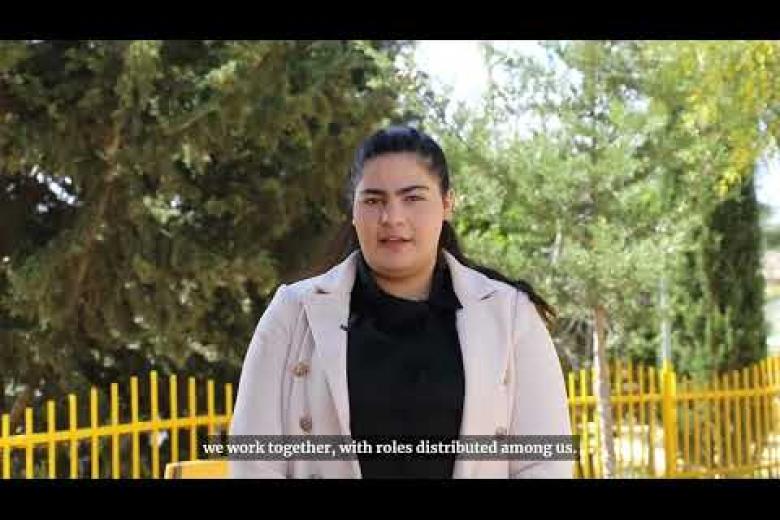Supporting the Next Generation of Local Leaders in Developing Climate Solutions in the West Bank
Bushra, 20, from the northwest of the West Bank, is an active member of her village’s Green Committee—a local group dedicated to helping communities adapt to the growing impacts of climate change. “As young people, our role is vital in creating a safer and more sustainable future for everyone,” she said during the 2025 Humanitarian Networks and Partnerships Weeks.
In this video, Bushra shares more about her work with the Green Committee and her vision for youth leadership in climate change adaptation efforts around the world. “As members of the Green Committee, we work as a team and meet regularly to create action plans that improve our local environment. What makes our committee special is its diversity—it includes people of all ages: youth, adults, men, women, and children. This brings a variety of perspectives and ideas. Each member plays a specific role, whether it’s organizing events, engaging the community, or coordinating with local authorities,” Bushra explains.
“Communities most affected by climate change are best positioned to identify and implement the solutions needed to protect their children and livelihoods,” said Saher Khoury, Project Manager at World Vision. “Empowering local leaders—especially young people—strengthens our collective capacity to confront environmental challenges and builds safer, more sustainable communities.”
To support these efforts, World Vision, in partnership with Ma’an Development Centre and with funding from the German Federal Ministry for Economic Cooperation and Development (BMZ), is implementing the Green Palestine project: *Promoting a Sustainable Environment for Children, Their Families, and Communities in Areas B and C of the West Bank*. The initiative aims to enhance the resilience of 40 communities in the face of climate change and environmental risks. “The Green Palestine project helps communities like mine deal with climate change and environmental issues,” Bushra says.
As part of the project, 22 Green Committees have been established. With training and support, 520 committee members are now leading 40 innovative, community-based environmental protection initiatives, along with 80 gender- and age-sensitive awareness campaigns. These efforts aim to improve environmental practices, knowledge, and attitudes among children and caregivers—both male and female—around climate change mitigation, adaptation, and protection.
“The Green Palestine project isn’t just about the environment—it’s also an educational and life-changing experience. It helps our community understand the environmental risks we face and work together toward a greener, more sustainable future. Environmental initiatives don’t just benefit nature; they also help address economic, social, and health challenges linked to climate change. As young people, we play a crucial role in building a better future. And the work is far from over,” Bushra concludes.
The Palestinian territory is among the regions most vulnerable to climate change. Its fragile natural resources, lack of sovereignty, and limited financial capacity compound the risks. Ongoing issues such as water scarcity, pollution, land degradation, desertification, and unsustainable land use further intensify the crisis.
